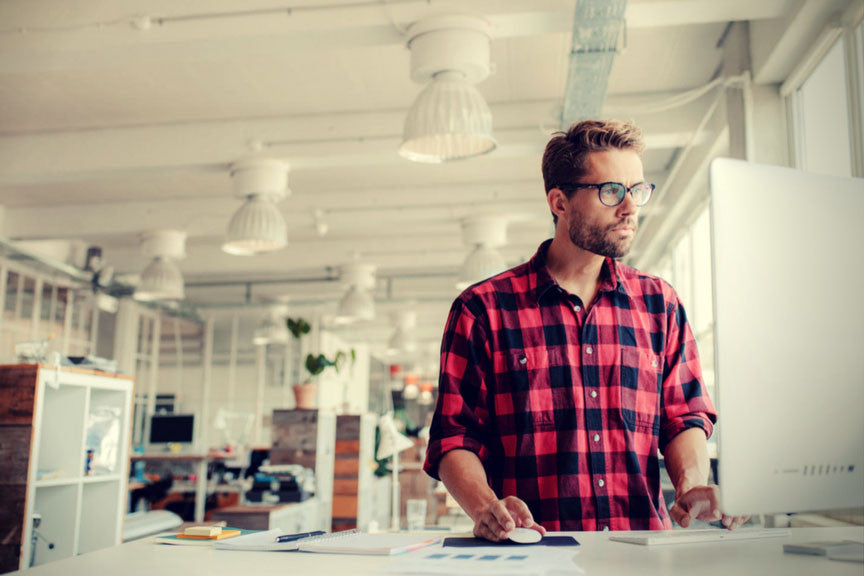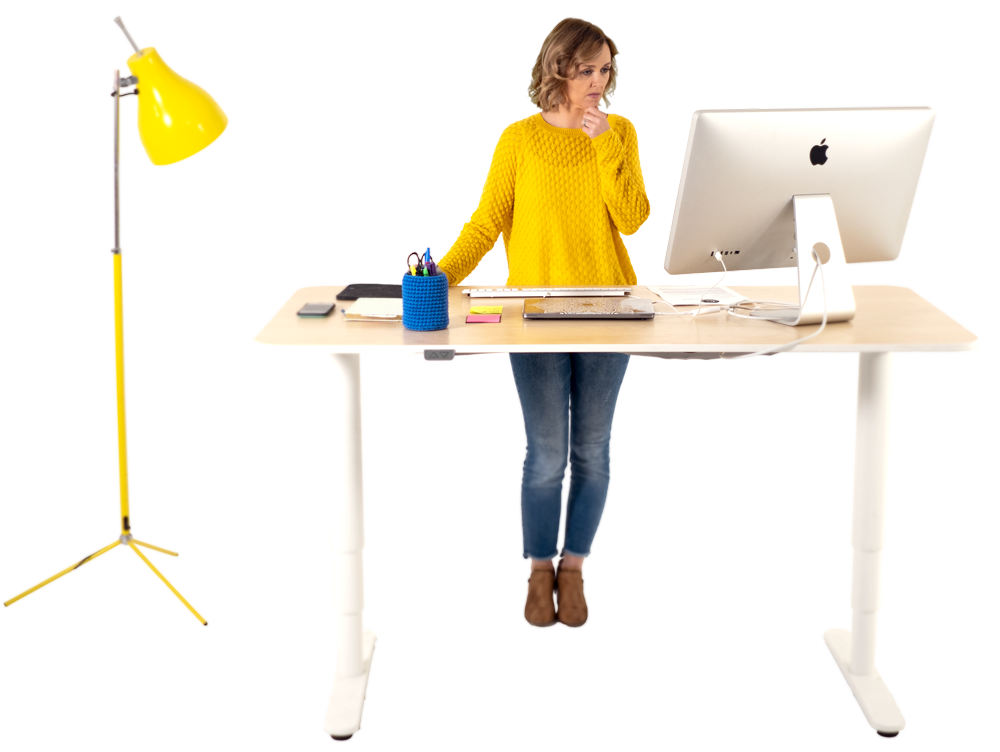
I remember the first time I saw someone working at a stand-up desk. It was 2009 and a colleague had rearranged the furniture in her office and needed some help reconnecting her printer. I noticed that her office makeover involved putting her computer on top of a stack of boxes so that she could work standing up. To be honest, I thought she was a little peculiar. It seemed rather impractical, perhaps even a little silly.
I now realise, given that I was spending hours and hours each day sitting in edit suites and at computers, that I was the silly one. My colleague (who is a highly accomplished health journalist and academic) was waaaaay ahead of her time. She had foreseen the tsunami of evidence now emerging which demonstrates that sedentary behaviour (too much sitting) is a major health concern.
We now know that the more you sit, the more you are at risk of disease. When researchers conducted a major analysis of the results of 18 studies that, when combined, involved almost 800,000 people, they found that compared with those who sat the least, people who sat the longest had a:
• 112% increase in risk of diabetes
• 147% increase in cardiovascular events
• 90% increase in death caused by cardiovascular events
I recently spoke with one of the authors of that study, Professor Stuart Biddle who has been instrumental in shaping UK Government recommendations for exercise and sedentary behaviour. (My podcast with him is below.) Formerly at Loughborough University in the UK, Biddle has recently moved to Australia and is leading a research team at Victoria University’s Institute of Sport, Exercise and Active Living. “Exercise is still highly important but sitting alone – sitting as a single behaviour – is a risk; and I think we've only just really started to understand that in the last few years,” he told me.
If you think that none of this applies to you because you’re pretty diligent at hitting the gym a few times each week, you might want to think again. Emerging research shows that we may not be able to exercise away the harmful effects of sitting too much. For example, one study found that the more time people spent watching television, the more likely they were to have abnormal glucose metabolism (where your body converts glucose into energy to fuel your cells) and metabolic syndrome (a number of risk factors that raise your chances of heart disease and other health problems like diabetes and stroke). This was true even if they were exercising regularly. A meta-analysis (a study of studies) found that sitting is associated with an increased risk of certain cancers even when people were getting the daily recommended levels of exercise.
While the complexities of this new science are still being debated, and new papers continue to be published at rapid pace, the takeaway message from the current evidence boils down to one very simple message: We need to move more and sit less.
When Stuart Biddle’s video image came up on my computer screen for our interview, I couldn’t help noticing that he was talking to me from a sit-stand desk. “The desk is elevated virtually all the time because then I'll go off to a meeting and maybe sit for a bit, then come back and work at my standing desk,” he explained. “Of course we need to sit down and we have the absolute right to sometimes just relax and switch off and sit in front of a good film and so on. That’s absolutely fine. What we're trying to avoid here are excessively long periods of sitting, or just too much sitting overall. These standing desks enable you to do that.”
Biddle’s choice of office decor is based on sound evidence. In 2016, he and his colleagues published a review that looked at all the available research on how to get people to sit less and found that active workstations like standing desks result in less sitting time. They also have a positive effect on several health markers, and have no detrimental effect on work performance. “The simple notion of a standing desk is an environmental restructuring intervention. You’ve restructured the environment of a sitting desk into a standing desk and therefore you sit less,” Biddle explained.
If you’ve read the chapter in my book about how the world around you influences your health, you’ll know that much of what you do every day is not actually driven by your conscious thought, but rather by your unconscious instincts, patterns, and behaviours. As a health journalist with a chronic health condition which is worsened by unhealthy lifestyle behaviours, I’m especially interested in finding easy ways to change the subtle environmental cues and triggers around me. Installing a sit-stand desk so that I can work standing up for some of my day is the very definition of a no-brainer.
While sit-stand desks are increasingly common in offices around the globe, they do come with a word of warning. Researchers have observed a “compensation effect” when people start using them. That is to say, people think that if they work standing up, it means they can slack off afterwards.“Don't kid yourself that that's all you need to do, but it's certainly a really good start,” said Biddle. In other words, while having a sit-stand desk may encourage us to mindlessly sit less, we still need to be mindful of when, where and how often we are sitting.
Once I started looking into all this, I realised that my colleague had been onto something back in 2009. Rather than being crazy to stand up at work, it seemed crazy not to. I’ve experimented with a few different set-ups and found that a desk that I can raise and lower throughout the day is the best solution for me. Given that Biddle’s review paper also found that self-monitoring is an effective method of getting people to sit less, I also wore a fitness tracker for a few months. I set it to vibrate every hour and it helped to train me to get up and move with more regularity. I’m now known for spontaneously getting up from my desk and performing a few yoga asanas, or burpees. I’ve noticed that I have fewer general aches and pains and it hasn’t impacted on my productivity at all. If anything, it’s boosted my energy levels, especially during the notorious 3pm slump. While these days I’m the one who gets strange looks by observers, it’s heartening to know that by tweaking my environment and monitoring my behaviour, I’m easily and inexpensively making a big difference.
Further reading:
Check out this post in The Conversation for the low-down on the ergonomics of stand-up desks.
Also, here is my podcast episode featuring Professor Stuart Biddle –





 The Connection (DOWNLOAD-TO-OWN)
The Connection (DOWNLOAD-TO-OWN) My Year Of Living Mindfully - Book
My Year Of Living Mindfully - Book




